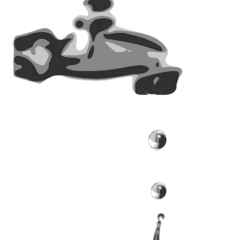Uncategorized
What Makes a Great Dental Blog Post?
“A blog post…, you say? First, let’s be realistic!”
Writing takes time. And most days as a dental professional that may be in short supply. You have patients to treat and a practice to run and promote.
Perhaps you already know the value of blog content to your dental website platform. But keeping the flow steady and the quality high…that’s another challenge.
A process will help
Dentistry is subject matter you know something about. Dental content might not be all that “sexy.” But creating a steady flow of it can be easier with a system in place.
The first step in the process is committing to content creation. Your search results and online influence will rise the more useful content you publish.
Next, is quality. Too technical or wordy and you’ll lose your reader. Too brief or unprofessional and you’ll also discredit yourself.
Make a commitment that you’ll provide ongoing, quality content. Here are some field-tested insights into the making of a “great” post.
1-A benefit-focused headline
The headline will, in essence, tip your reader in the direction of the blog’s topic. A great blog post is laser-locked on one big idea, about solving one problem, by telling one compelling story.
One and done! A great blog post engages the reader from the start.
A benefit-focused headline peaks their interest and lures them into the content. The more specific the better.
Too often headlines provide an easy off-ramp for your reader. A headline can be the first (and last) thing they see before clicking away from your content or…your site.
Experiment with a variety of headlines options. Do they compel you to read further? Is it obvious that “help” is on-the-way if they read the post?
Headlines require a high level of attention before you publish.
2-A compelling opening (lead) paragraph
You’ve probably heard the saying, “You never get a second chance to…make a first impression.” That applies here.
Remember your headline raises the curtain on the “story” you’re about to tell. And it’s a story that you have little time to set up.
Dive in!
Wait…why so fast?
Attention spans are short. And online readers have notoriously short spans of attention.
Journalists get it. They’re trained to not “bury the lede.”
If you snooze-them-you-lose-them!
A bold question. A quote. An attention-getting statement.
These will help engage your reader.
3-“Meat”
You know, as in give them something substantial to “chew” on.
The goal is helping them make an informed decision about a particular dental service or treatment. Paint the picture starting with the problem then lead them to a solution.
Again, keep this to one big idea. If you wander all over the map they will too…right off your page.
- Use benefit-charged bullet points. Online readers like to scan. Make sure when they do that they’re getting the substance of your content in small “bites.”
- Break up the post with subheads. Keep them benefit oriented and compelling.
- Avoid “cute,” cliched statements. Be creative but not to the extent that you lose your reader by trying too hard to impress them.
The best impression is how your content answers their burning question or solves their problem.
4-It compels them to do something
This is where you wrap it up. Avoid being vague or too general.
The more specific your closing the better. What do you want them to do? What’s your call-to-action?
- Call us now…
- Schedule your next…
- Contact us for more information…
- Refer family or friends to…
- Leave a comment…
- Ask us about…
Be specific. And fearlessly “tell” them what to do.
These four tips will help you frame a great blog post and evaluate your content.
Remember that the beauty of digital (online/web) content is that it can be repurposed and republished when necessary. And if your time is lacking…why not ask for assistance?
What a Back-Handed Criticism Taught Me About Watching My Language and How It Can Improve Your Dental Website Content
A criticism recently got under my skin. I prefer to roll with push-back but this one irritated me given my experience and expertise.
It involved a discussion about a website’s language, tone, and readability. By the way, each are vital on your dental website and in your dental marketing.
Let’s make one thing clear – I speak English as my first and only (for now) language.
I’ll explain why I’m sharing that bit of trivia in a moment.
My first words as a child were in English.
I’ve sat through boring English classes (no offense teachers or professors) at a high school, university, and post-graduate level. And as a professional copywriter and content marketing strategist I’ve had to unlearn a portion of what I was taught (some rules of grammar DO NOT APPLY).
I’ve learned about “word-economy” (how to say the most with the least amount of words) from some of the world’s best communicators and communication coaching settings.
Plus…
I have over three decades of experience using the English language to persuade, compel, inspire, motivate, celebrate, and comfort.
I have tens of thousands of hours writing and delivering presentations as a public speaker in a variety of venues using (Bingo!) the English language.
And I have close to an equal number of hours as a trained, professional writer/copywriter commanding the English language on behalf of my own and my client’s services.
So when I was questioned by a client (trying to make a point) whether English was my first language, understand why I was ticked. To clarify, the whole issue wasn’t about my alleged “butchering” of the English language.
The issue surrounded the voice, tone, and general design of the language that’s effective on a dental website. Dental practices and dental marketers often hire me to rewrite their content because what’s there lacks all the above – compelling voice, tone, and readable design.
What’s the deal?
The default on many websites (dentistry is no exception) is high word count (that lacks flow or purpose), wordiness (fluff and bloat that doesn’t offer solutions), and feature-heavy (”Hey, look how state-of-the-art equipped and educated we are…” with few if any stated benefits to the reader/site visitor).
Too strong?
Is it too strong a criticism if your readers aren’t compelled to read past your Home page graphics and headline? Or if your copy/content reads like a chapter out of the most recent CE course you took on osseointegration (i.e. it’s full of dental-speak that only dental professionals use and understand).
I’m not implying that your dental website copy or your dental marketing content should be “dumbed-down.” Frankly, that’s an insulting way to describe copy and content that should, above all, compel people to use your services to improve their health.
But for goodness sake make it easy for them to read and know what action to take next!
How to Create and Deliver Dental Content that People Can Understand and are Compelled to Act On
Watch your language.
Language is about being understood. It makes sense that if you need an interpreter or if your reader must Google the definition of a particular word or words used in your content – it’s not connecting!
Your readers connect with you word to word, line to line, and page to page IF they understand what you’re saying.
- Write your dental content for the general public. The education level of your target audience isn’t the benchmark. The benchmark is speaking clearly and compellingly about your services in a way that leads to a specific, intended action like a scheduled appointment, client contract, etc.
- Know your readers. Listen to their pains, concerns, and goals. The late, writer and leadership consultant, Stephen Covey, said it best, “Seek to understand then to be understood.” There is no connection without knowing. Knowledge of your readers leads to understanding what they lay awake at night thinking about, feeling, etc., that compelled them to land on your website or read your content in the first place. Write to that!
Take-that-tone.
Language is about understanding. Tone is about being heard.
Our grandson will ask, “Are you mad at me…?” It surprises me when he asks that because in the moment I’m not “angry” with him at all.
In reality, he’s perceiving my mood by the “tone” he’s hearing in my voice. If I answer a question somewhat “short” or abruptly he hears anger when I’m simply being brief and to the point.
- Write in a conversational tone. Use this tone more than 95% of the time in your dental marketing content. Why? It works because writing how you talk is how you’ll best be heard and get your point across.
- Keep the tone casual, crisp, and to-the-point. Punchy, short sentences compel better than long, rambling, wordy sentences. Remember, with content, being heard starts with being easy to read and follow.
Raise your voice.
This isn’t about volume. Voice is about being relevant.
I’m talking relevance to your audience. Okay, to soothe your occasional need to feel all intellectual and academic – if your audience is other dental professionals or colleagues go ahead and unload all the dental-speak you want.
That’s fine. They get-it.
But…
That’s not your audience on your dental practice website.
- Again, know your audience. Most of the time it’s everyday, ordinary people who have the need to visit your dental web pages because of mouth pain or some other oral health related issue. Period.
- Know how to use your voice. Internal web pages (Home page, About Us page, Services/Procedures pages) are for quick-scanning, easy-to-read, call-to-action content about the basics of your dental services. Your blog/article pages are for more detailed, educational, albeit easy-to-read and informative content that compels them to trust your expertise.
Now, was that so difficult to understand? I’m a bit tongue-in-cheek with that question.
I’m also biased about the language, tone, and voice you use on your dental website and in your dental marketing content.
Keep it real. And whatever you do, keep it readable. Or…your site visitors and readers are gone with a “click.”
That should really get-under-your-skin.
Why “Tasty” Associations are Way Better than “Deadly” Assumptions in Your Dental Website Content
 It was a random, out of season, statement. Especially during the heat of July.
It was a random, out of season, statement. Especially during the heat of July.
There’s a gap between making an association and making an assumption. One can benefit your dental website content. The other can hinder it’s impact.
The key is playing to your strengths. Especially on the benefit side.
Our grandson was thoroughly enjoying some chive and onion cream cheese spread during a family gathering. Scooping a glob of deliciousness onto his cracker he commented, “This dip tastes like Christmas…”
We laughed at his seasonal leap from the summer, mid-year heat to thoughts of cooler temps and holiday gatherings. I found it interesting that, at his young age, he could make such a brilliant taste association.
A matter of taste
You have the benefit of associating certain tastes, smells, sights, and sounds with experiences. Some good and pleasant. Others bad and unpleasant.
You hear a song on the radio and you’re immediately transported to another time and place. The smell of a certain food overtakes you and you’re immediately back at grandma’s dinner table.
Your dental website also comes with a certain set of associations. I’ll deal with some “deadly” assumptions in a moment.
The moment a search lands someone on your site you have an extremely limited amount of time (as in seconds) to form an association for the reader. In fact, you have somewhere between two and five seconds to be exact.
“Guilt” by association or “death” by assumption
If you have a choice, in my professional opinion it’s better to be “guilty” on the association side of your web content than it is die a slow “death” by assumption.
Here’s an example of making an assumption: The more you say about what makes you different or better than another dental practice down the street will lead to more scheduled treatment.
It’s better to lead your website visitors to make an association. For example, your dental website should remind visitors of what they will receive by scheduling or doing business with you. Create website copy/content that answers the question, “So what…?”
“So what…,” you have a new state of the art digital x-ray device – how does it benefit the patient?
“So what…,” your dental practice features a lobby coffee bar, satellite TV on three, 60 inch, HD tv’s, and warm towels in the patient exam rooms – list a deeper benefit for each of those.
Those and many more are excellent (and overly promoted) features associated with many dental practices these days. The key: connect them with stated benefits.
Another assumption: The more words I have on my web pages, the better my search results will be.
It’s common to assume that more is better. That more words makes you more legitimate or search engine friendly.
Not. So. Much.
In fact much or more is not always better.
Try this association: Your readers will better associate with your dental website copy when it’s simply and usefully worded. Remember “fluff” and “bloated” page content bores and prompts a click away from the page.
Create website copy that’s readable, “You”-focused, easy to navigate with benefit oriented bullet points, and plenty of eye-appealing white space.
And yet another assumption: Your website will create all the response you need if it’s full of eye-candy graphics, images of smiling, “beautiful” people, and a trendy looking design.
Compare dental websites in your area or community. Make note of the stock images you find that are used on your site and/or a number of others.
This creates a deja-vu feeling – “I’ve been here before…next!”
And with a click they’re gone. Translation: new patient, next treatment, production…lost!
Association: Your site visitors will respond when you compel them to. Website visitors respond when they’re told what to do next.
And that next step is easier because you have a clear call-to-action. Create compelling, call-to-action copy and links on every web page.
Answer the question clearly: “Where do I go/click next…?” Use action words like, “schedule,” “call us…,” “contact…”
On your dental website one paragraph of copy/content should naturally and compellingly lead to another. Design useful, informative, benefit-focused, action-friendly web pages throughout your site.
Make no “deadly” assumptions. Instead, create new, fresh associations.
You’ll create site visitors who say, “This reads (”tastes”) like a dental provider I could schedule with.”
And isn’t that why you have a website in the first place?










